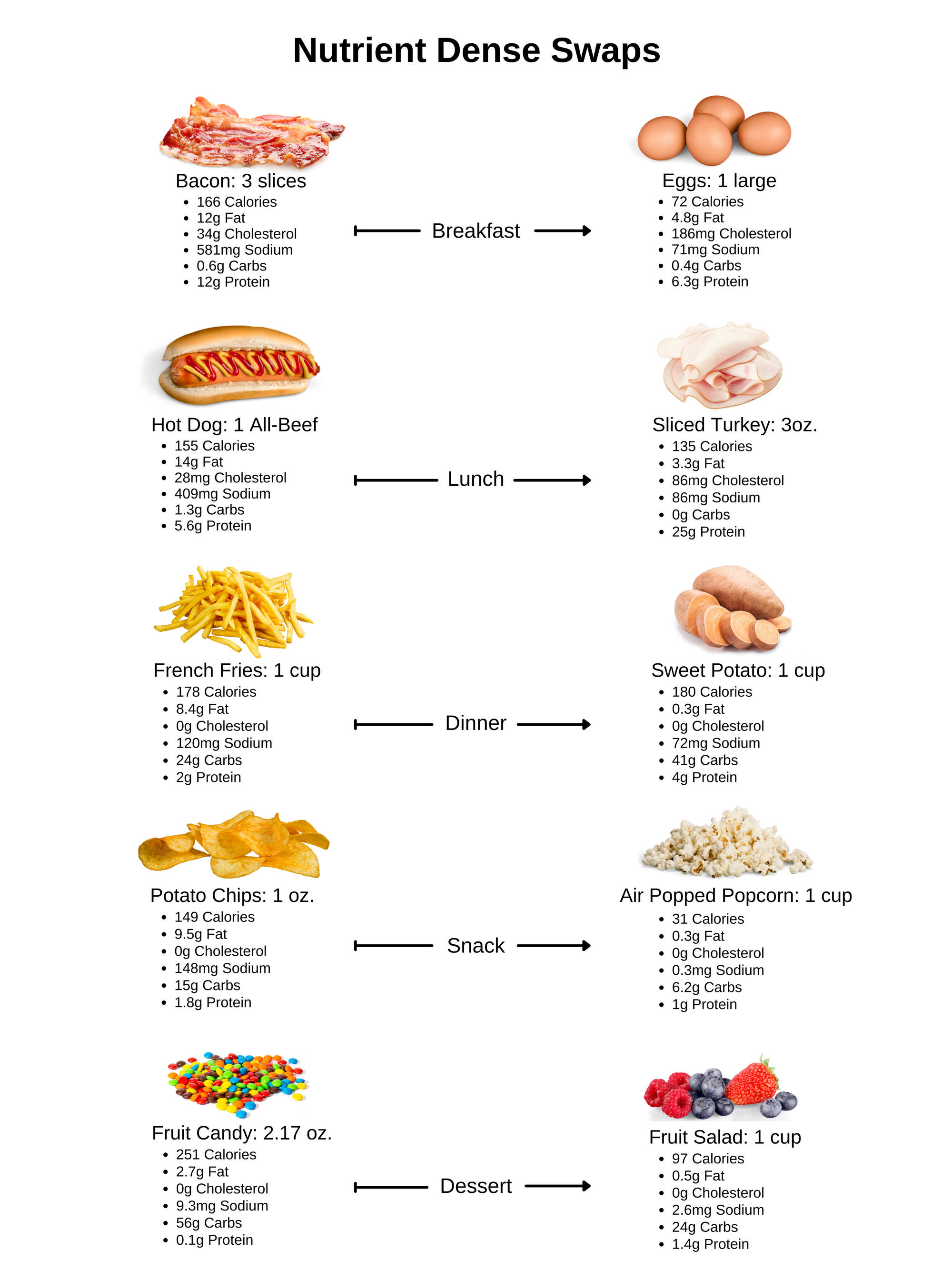Food can restore and nurture our bodies and minds, but not all foods promote health. Learn why eating nutrient-dense foods can help you maximize nutrition without too many calories.
“Let food be thy medicine and medicine be thy food.” – Hippocrates
Hippocrates may not be a household name these days, but given his impressive contribution to our very understanding of health, he is certainly a figure we all ought to know. Admired as the “father of medicine,” the ancient Greek physician was among the first of his time to believe that it is a lack of quality nutrition, and not supernatural forces, that is the root cause of disease and illness. He had faith in the power of food as a remedy for good health and a belief that every bite of food we eat is an opportunity to either promote our health or harm it, a belief held dear by most practitioners even today.
From empty calories to nutrient dense
We know we need to eat the "right foods" to keep healthy, but what does this mean really? Exactly what makes our food choices healthy? The ideal formula is pretty simple: take in the highest number of immune-boosting micronutrients - vitamins, minerals, and antioxidants – for as few calories as possible.
We can do this by limiting foods that have empty calories and instead focus on eating foods that are nutrient-dense. Empty calories are found in foods with solid fats or added sugars, like cookies, sodas, cheese, and ice cream. These calories offer no nutritional value. Nutrient-dense foods, on the other hand, have a high ratio of micronutrients per calorie. That is, these foods are high in healthy micronutrients but low in calories at the same time.

What are the best ways to shift toward nutrient dense eating?
Nutrient dense eating can look as simple as making small changes to foods you already love. A good example is choosing lean or low-fat options that are also low in added sugars, saturated fat, and sodium. For instance, two cups of salty, buttery popcorn pack 184 calories onto your day, but the same amount of plain air-popped popcorn sets you back only 62 calories.
Building your meals around high-macronutrient, low-calorie ingredients is another effective way to make sure you are eating a good amount of nutrient dense foods. Leafy greens like kale, spinach, and romaine lettuce, and vegetables like carrots, cabbage, broccoli, and tomato rank the highest in nutrient density. Cheese, ice cream, soda, chips, olive oil, and most animal products rank the lowest, and should make a rare appearance on your plate.
To see nutrient density in action, consider this: for 100 calories, you can either easily fill up on three cups of antioxidant and fiber-packed broccoli, or just 1 tablespoon of refined olive oil. Both have same number of calories, but each impacts your body - and feeling of fullness - in very different ways.

Can nutrient dense eating help with weight loss?
Eating in a nutrient dense way naturally limits your intake of calorie-laden foods like oil, sugary processed foods, dairy, and meats, so it stands to reason that eating this way will help you to lose and maintain a healthy weight. A recent study confirmed this to be the case, tracking 2,273 individuals who ate mostly vegetables, fruits, beans, whole grains, and seeds and nuts over the span of 3.8 years. It found that obese subjects lost 49 lbs after one year, 54 lbs after two years, and 55 lbs after three years. Overweight subjects maintained a weight loss of 14 lbs throughout the three years. In other words, eating these foods not only helped the subjects to lose weight, it also made it possible to keep the weight off.
The bottom line: choose your calories wisely
The power of food to improve your health simply cannot be overstated. But some calories count more than others, and choosing foods that are high in nutrients and low in calories should be a critical part of any sustainable, healthy lifestyle. Nutrient dense foods give you more bang for your buck: you can eat more of them, keep full for longer, and reap all the healthful benefits they have to offer but without too many calories. Remember, each bite is a choice, and a chance to inch one step closer toward healing. Make your calories count!






